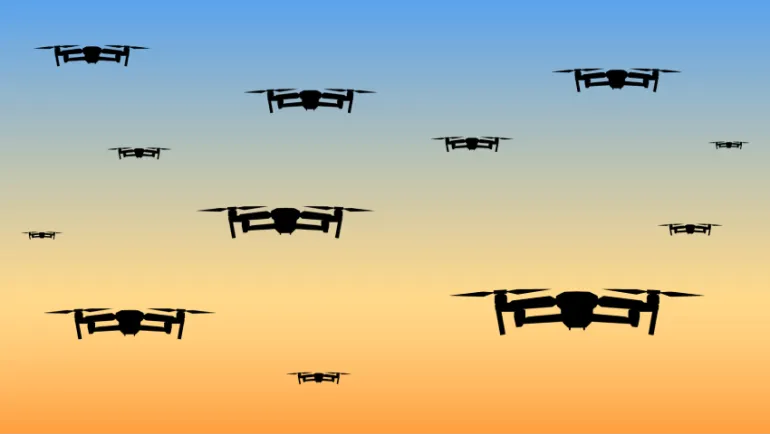
The world is witnessing a new era in defense technology one where Artificial Intelligence (AI) is not just supporting human soldiers but commanding autonomous fleets of machines. The rise of AI-powered drone swarms is changing the face of modern warfare faster than anyone could have predicted. What was once science fiction is now an emerging military reality and it’s both fascinating and alarming.
As AI evolves to think, analyze, and react faster than humans, the future of war is becoming increasingly autonomous. These intelligent drone systems can cooperate, make tactical decisions, and execute missions with minimal human input. But what exactly are AI drone swarms, and why are they becoming a critical part of global defense strategies?
AI drone swarms refer to large groups of unmanned aerial vehicles (UAVs) that are coordinated through Artificial Intelligence algorithms. Instead of relying on a single pilot for each drone, a swarm operates as a collective unit, communicating and adapting in real-time.
Inspired by nature think of how bees or birds move together these drones share data instantly, adjust to environmental changes, and identify targets autonomously. Each drone acts as a “node” in a connected system, using AI to predict movements, avoid collisions, and achieve mission goals cooperatively.
This is not just a military innovation; it’s a complete shift in how nations view defense technology and battlefield strategy.
Global superpowers like the United States, China, Russia, and Israel are investing heavily in AI-driven drone technology. The U.S. Department of Defense has already begun testing AI drone swarms under projects like the Replicator Initiative, designed to deploy thousands of low-cost, intelligent drones capable of overwhelming enemy defenses.
Meanwhile, China’s defense sector is also developing AI swarm technologies that can operate across land, sea, and air. Their goal: to make decision-making faster than any human command chain.
With AI-based targeting, real-time data analysis, and autonomous strike capability, these drones can coordinate attacks, jam radar systems, or deliver supplies all without direct human control.
Traditional warfare depends on human decision-making and centralized command. AI swarms, on the other hand, use decentralized intelligence meaning each drone can make local decisions while maintaining overall coordination with the group.
This approach offers several game-changing advantages:
This is the AI revolution in military technology transforming defense into a system of smart, self-governing machines capable of fighting 24/7.
While the benefits of AI drone swarms are undeniable, they raise serious ethical and moral questions.
Who bears responsibility if an autonomous drone makes a fatal error? What happens when AI systems decide to engage a target without human approval? These questions have led many experts to call for stricter international regulations on autonomous weapons.
Organizations like the United Nations and Amnesty International are already discussing global treaties to limit or ban “killer robots.” The challenge lies in balancing technological progress with ethical responsibility ensuring AI remains a tool of defense, not destruction.
Interestingly, the same AI and drone technologies used for defense are finding applications in civilian life. From disaster relief operations to search and rescue missions, AI swarms can map terrains, deliver medical supplies, and even monitor climate change.
This dual-use potential shows that while the technology can be dangerous, it can also serve humanity in positive ways. The key lies in responsible innovation ensuring that Artificial Intelligence is guided by human ethics, not unchecked automation.
Experts predict that by 2030, AI drone swarms will become standard in most advanced military arsenals. With advancements in machine learning, edge computing, and quantum technology, drones will soon be able to plan missions, learn from failures, and improve performance autonomously.
However, this future demands transparency, accountability, and global cooperation. The AI revolution in warfare must be approached with caution balancing innovation with the preservation of human control.
As nations race to develop these intelligent machines, one truth becomes clear: the future of war will be decided not just by firepower, but by algorithms.







Comments
There are no comments for this Article.